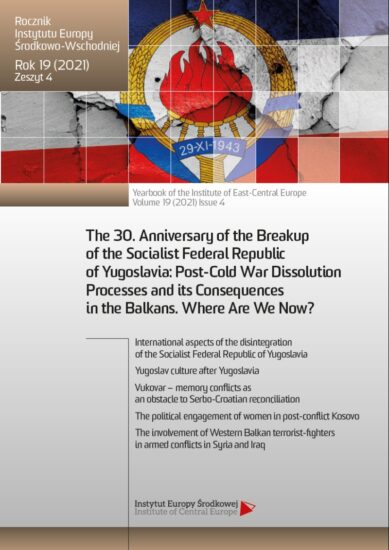Polish-Ukrainian Treaty of Good Neighbourhood. Analysis of the decision-making process
Polish-Ukrainian Treaty of Good Neighbourhood. Analysis of the decision-making process
Author(s): Beata SurmaczSubject(s): Political history, Recent History (1900 till today), International relations/trade, Security and defense, Comparative politics, Geopolitics, Politics and Identity
Published by: Instytut Europy Środkowej
Keywords: Polish-Ukrainian relations; Treaty on Good Neighbourhood; political decision;
Summary/Abstract: 2022 marks the 30th anniversary of the Treaty of Good Neighbourhood, Friendly Relations, and Cooperation between Poland and Ukraine. In the presented article, by applying elements of decision analysis, an attempt was made to explain the decision to conclude the Treaty. First, the decision-making centres in Poland and Ukraine, and their awareness with respect to Polish-Ukrainian relations, were presented as three separate circles: public opinion, political parties, and groups of the most important decision-makers. The decision to sign the treaty was possible thanks to the political and intellectual elites who originated in the former communist-era opposition, both in Poland and Ukraine. Those elites convinced the governing circles to accept their conception of foreign policy. In Poland, this was all the easier because people originating directly from those elites formed part of the decision-making bodies. In Ukraine, however, the foreign policy conception of the dissident circles was internalised by the President. Secondly, using the game theory and assuming the rationality of decision-makers, the decision-making process was reconstructed, understood in the category of interactions between two decision-making centres. The two states aimed to conclude a treaty that would satisfy both parties. It can thus be concluded that they demonstrated a readiness to compromise during the negotiations. It can also be assumed that this readiness was slightly asymmetrical in Poland’s favour. Ukraine was willing to sacrifice much more in order for the treaty to be negotiated.
Journal: Rocznik Instytutu Europy Środkowo-Wschodniej
- Issue Year: 19/2021
- Issue No: 4
- Page Range: 193-219
- Page Count: 27
- Language: English

